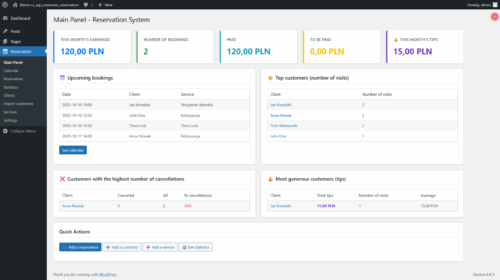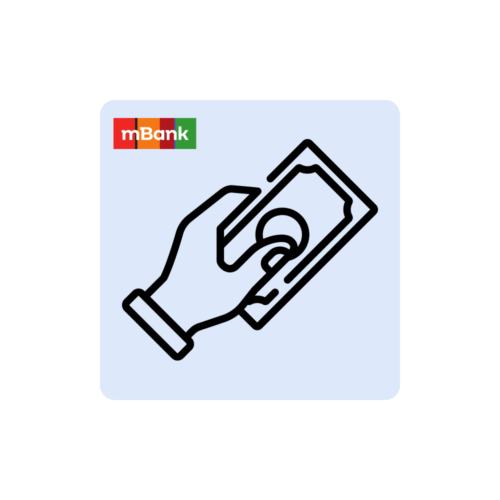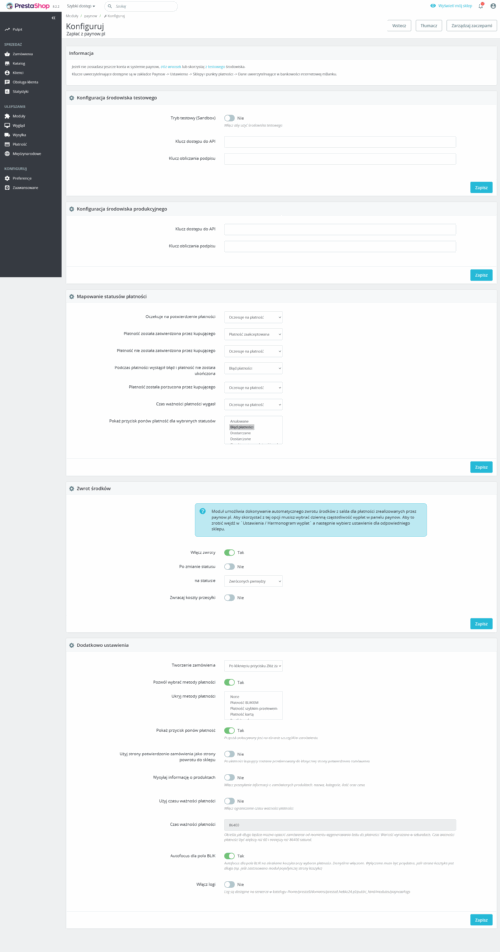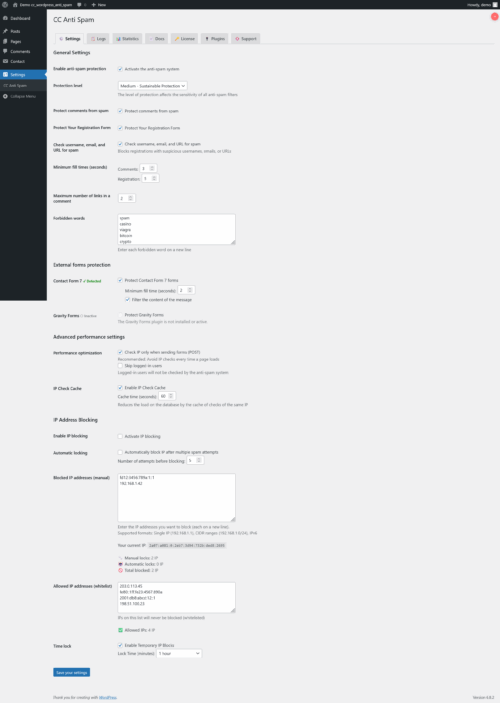Spam in WordPress is a problem that almost every website owner faces. Unwanted comments, automatic submissions from contact forms or mass bot registrations can turn site administration into a nightmare. In this article, you will learn how to effectively protect your site from all types of spam.
What is spam in WordPress and where does it come from?
Spam in WordPress is any unwanted, automatically generated content that appears on your site without the administrator's permission. Spammers use automated bots that:
- They are scanning the internet for WordPress sites
- Automatically fill out forms and comments
- They post links to suspicious sites
- They create fake user accounts
- They are trying to exploit security gaps
Types of spam in WordPress
Spam in WordPress comes in several basic forms. Each requires a slightly different approach to security:
1. spam in the comments
This is the most common and visible type of spam. Spammers post links to suspicious sites, advertisements for products or services, and sometimes just meaningless content in comments under articles. Spam comments:
- Lower the professional image of the site
- May contain links to malware sites
- Litter the database
- Increase content moderation time
- Negatively affect SEO
2. spam in contact forms
Contact forms (e.g. Contact Form 7, Gravity Forms, WPForms) are particularly vulnerable to spam attacks. Bots automatically fill in form fields, sending:
- Commercial offers and advertisements
- Links to illegal content
- Proposals for cooperation (fake)
- Phishing attempts
The result? Your inbox is cluttered with junk messages, and it becomes time-consuming to find genuine customer inquiries.
3. user registration spam
If your site allows user registration, spammers can create hundreds of fake accounts. These accounts are then used to:
- Publish spammy content
- Transmission of malicious files
- Conducting attacks on other accounts
- Littering the database
Why is spam dangerous to your site?
Spam is not just an annoyance - it's a real threat to your site and business. Here are the most important consequences of not protecting against spam:
| Problem | Consequences |
| Loss of credibility | Spam comments make the site look unprofessional and neglected |
| SEO problems. | Google may lower site ranking due to suspicious outbound links |
| Littered database | Thousands of spam posts slow down website performance |
| A waste of time | Manually removing spam can take hours each day |
| Security threat | Spam links can direct users to malware sites |
| Hosting costs | Increased consumption of server resources may generate additional fees |
Basic methods of spam protection in WordPress
Before we move on to advanced solutions, it's worth learning about the basic security methods built into WordPress:
Comment moderation
WordPress offers a built-in comment moderation system. To enable it, go to Settings > Discussion and check the option Comments must be approved manually. This is the surest way to control content, but it takes a lot of time with more traffic.
Limit the number of links
W Settings > Discussion > Comment Moderation you can set the maximum number of allowed links in a comment. Most spam contains multiple links, so setting a value of 0-1 effectively filters out unwanted content.
Blacklist of words
WordPress allows you to create a list of banned words and phrases. Comments containing these words automatically go to the trash. You can find it in Settings > Discussion > Blacklisted comments.
Why aren't basic methods enough?
While WordPress' built-in features are helpful, they have their limitations:
- They only work for comments - they do not protect contact forms
- Require manual configuration and continuous updating of lists
- Do not offer advanced bot detection
- Do not block spam sources (IP addresses)
- No detailed statistics or logs
A comprehensive solution: CC WordPress Anti-spam
If you're looking for a professional, comprehensive solution to protect your entire site from spam, it's worth looking at CC WordPress Anti-spam - an advanced plug-in that offers protection on multiple levels.
Key features CC WordPress Anti-spam
The plugin offers multi-layered protection that effectively eliminates spam without affecting the experience of real users:
1. advanced protection mechanisms
- Honeypot field - invisible fields for users that automatic bots detect (bots fill in all fields, including hidden ones)
- Fill time control - block forms filled out too quickly (bot) or too slowly (probably spam)
- Intelligent content filtering - automatic detection of banned words, phrases and suspicious patterns
- Limitation of links - control of the number of URLs in uploaded content
- Validation of user data - checking for suspicious patterns during registration
2. native integration with popular plug-ins
CC WordPress Anti-spam automatically protects forms from the most popular plugins:
- Contact Form 7 - Automatic protection of all CF7 forms without additional configuration
- Gravity Forms - Full integration with GF validation system
- WordPress native comments - protection of the comments section
- Registration forms - securing the creation of new accounts
3. advanced IP address blocking
This is one of the most powerful protection mechanisms. CC WordPress Anti-spam offers:
- Time locks - automatic expiration of locks after a specified time (30 min - 24h)
- Fixed locks - Permanent blockades for persistent spammers
- White list - allowed IP addresses that will never be blocked
- Automatic locks - The system blocks IPs by itself once the threshold of spam attempts is exceeded
- CIDR support - Ability to block entire IP ranges (IPv4 and IPv6)
- Proxy detection - correct IP identification behind CDNs and proxy servers
// Example of IP range blocking in CIDR notation
192.168.1.0/24 // Blocks all IPs from 192.168.1.0 to 192.168.1.255
2001:db8::/32 // Supports IPv64 Detailed logging and statistics
The plug-in offers a comprehensive monitoring system that allows you to:
- Registration of all spam attempts with full details
- Quickly filter and search for specific types of attacks
- Visual reports with Top 10 IP addresses and daily trends
- Color coding for easy identification of lock types
- Automatic cleaning of old logs
- Exporting data for further analysis
5. performance optimization
Despite its advanced features, the plug-in was designed with performance in mind:
- IP check cache - reducing database load by caching results
- Checking only at POST - minimize checks to actual form submissions
- Skipping logged-in users - exclusion of administrators from checking
- Intelligent SQL queries - optimization of database operations
- Asynchronous tasks - background cleaning by CRON
6. automatic maintenance tasks
The plug-in works in "set and forget" mode thanks to automatic tasks:
- Daily and weekly cleaning by WordPress CRON
- Automatic removal of expired locks
- Log size management (automatic limit)
- Detailed reports of cleaning operations
- Customizable schedule
Comparison with other solutions
| Function | CC WordPress Anti-spam | Typical solutions |
| Operation without JavaScript | ✅ 100% independence | ❌ Require JS |
| IP blockers from CIDR | ✅ IPv4 and IPv6 | ⚠️ Basic IP |
| Performance Cache | ✅ Intelligent cache | ❌ No optimization |
| Automatic CRON | ✅ Full automation | ⚠️ Manual management |
| Detailed logs | ✅ Advanced reports | ⚠️ Basic login |
| CF7 + GF integration | ✅ Native | ❌ Requires configuration |
Who is our plug-in for?
The plug-in is ideal for:
- Corporate websites requiring professional spam protection
- Blogs and news sites with active comment sections
- Online stores protecting contact and registration forms
- Social networks with high user traffic
- Business websites using Contact Form 7 or Gravity Forms
- WordPress administrators Those looking for a "set it and forget it" solution
- Web agencies managing multiple client projects
How to install CC WordPress Anti-spam?
Installation of the plug-in is extremely simple and takes literally minutes:
- Download the plug-in from the site COCOS.codes
- Go to your WordPress dashboard: Plugins > Add New > Upload Plugin
- Select the downloaded ZIP file and click Install now
- After installation, click Activate the plugin
- Go to the plugin settings and adjust the level of protection to your needs
Best practices in the fight against spam
Whichever solution you choose, it's a good idea to follow a few universal rules:
- Update WordPress regularly - new versions include security patches
- Use strong passwords - This prevents spammers from taking over accounts
- Monitor logs - Regularly check the sources of spam attacks
- Configure the level of protection - customize the sensitivity of the filters to your site
- Create white lists - add trusted IPs (e.g., your own, your office, your clients)
- Don't use default usernames - avoid "admin" as login
- Regularly clean the database - delete old spam posts
Summary
Spam in WordPress is a serious problem that can negatively affect your site's image, SEO, user experience and security. The basic methods built into WordPress are helpful, but often insufficient for professional projects.
CC WordPress Anti-spam offers comprehensive, multi-layered security that:
- Works without JavaScript - protects 100% users
- Secures all forms - comments, CF7, Gravity Forms, registration
- Automatically blocks spam sources - advanced IP management
- Provides detailed statistics - full control over security
- Doesn't slow down your site - smart performance optimization
- Works in "set and forget" mode - automatic maintenance tasks
With easy installation, intuitive configuration and professional support, CC WordPress Anti-spam is an investment that quickly pays for itself - saving you time, protecting your reputation and keeping your users safe.









